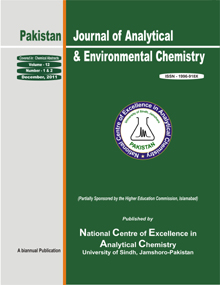Chemical Compositions of the Essential oil of Aerva javanica Leaves and Stems
DOI:
https://doi.org/10.21743/Keywords:
Aerva javanica; Amaranthaceae; Essential oil; Dry steam distillation; GC-MSAbstract
The essential oils from leaves and stems of Aerva javanica was extracted through dry steam distillation and the chemical composition of the oil was determined by Gas Chromatography-Mass Spectrometry (GC-MS). Total nineteen compounds were identified, representing 82.96% and 78.92% of the leaves and stems, respectively. The essential oil of Aerva javanica leaves was found to be rich in hentriacontane (21.48%), nonacosane (20.59%), heptacosane (19.78%), pentacosane (5.58%), octacosane (3.47%), triacontane (2.81%) and hexacosane (2.04%). Whereas the essential oil of stems was determined to be rich in nonacosane (23.26%), heptacosane (22.48%),
hentriacontane (18.32%), octacosane (3.42%), triacontane (2.24%) and squalene (2.07%). Thirteen chemical constituents were common in the essential oil of both leaves and stems of Aerva javanica
Downloads
Downloads
Published
Issue
Section
License
Copyright (c) 2025 Pakistan Journal of Analytical & Environmental Chemistry

This work is licensed under a Creative Commons Attribution-NonCommercial-ShareAlike 4.0 International License.






